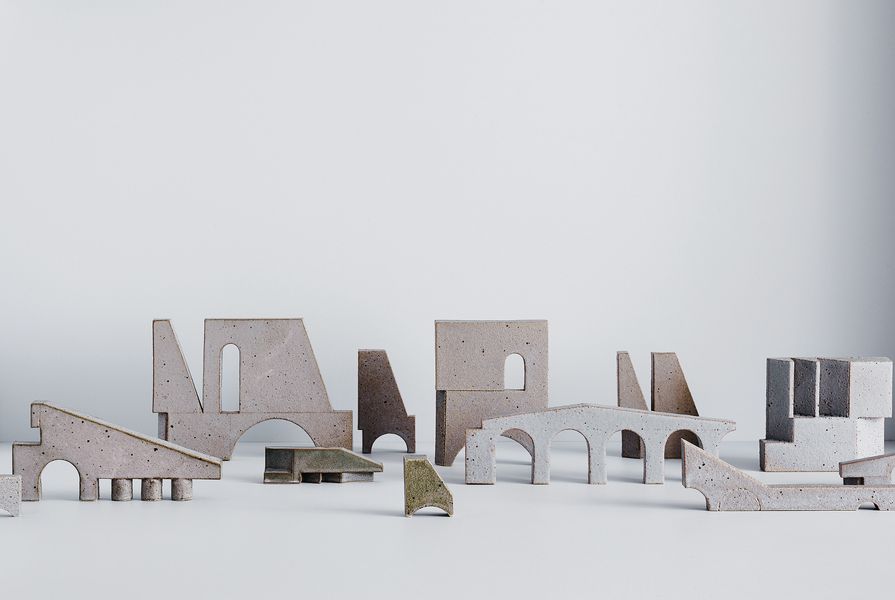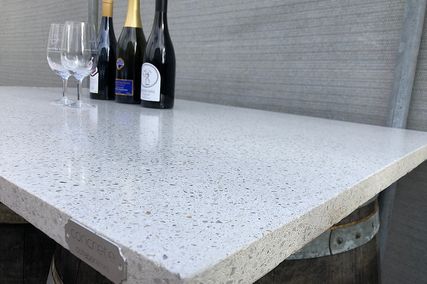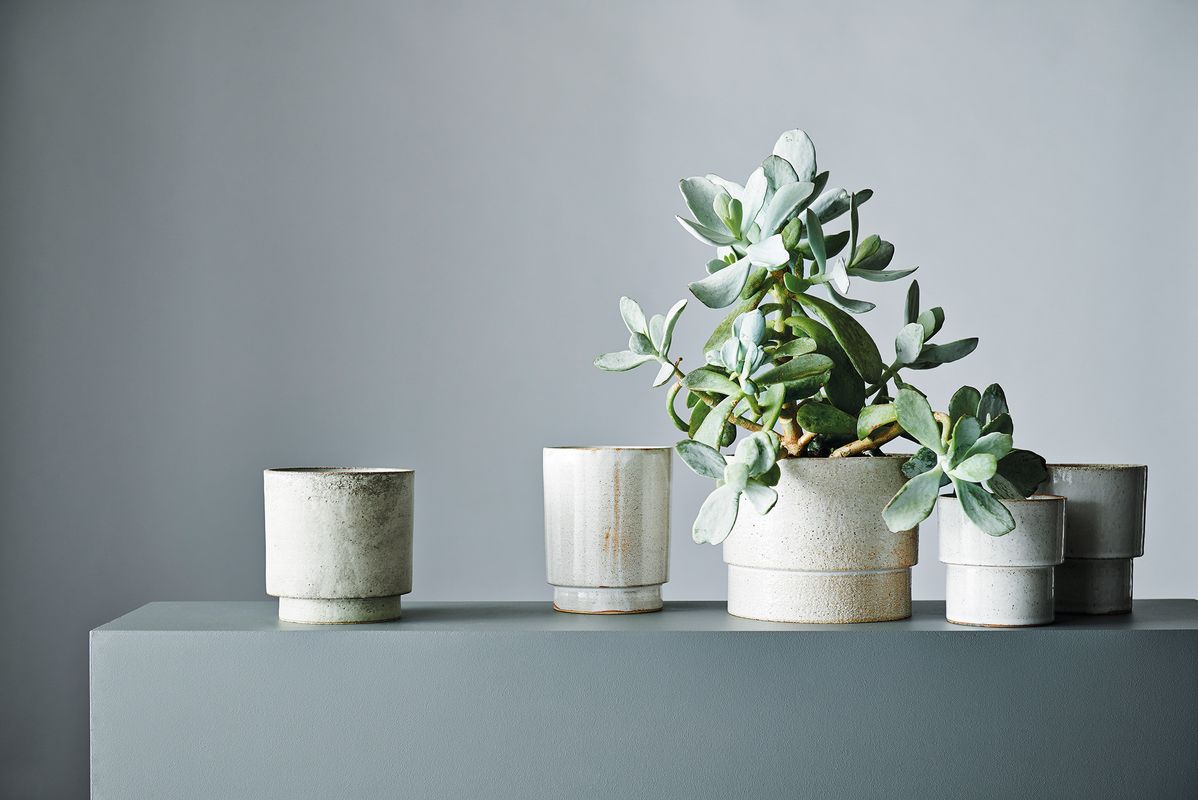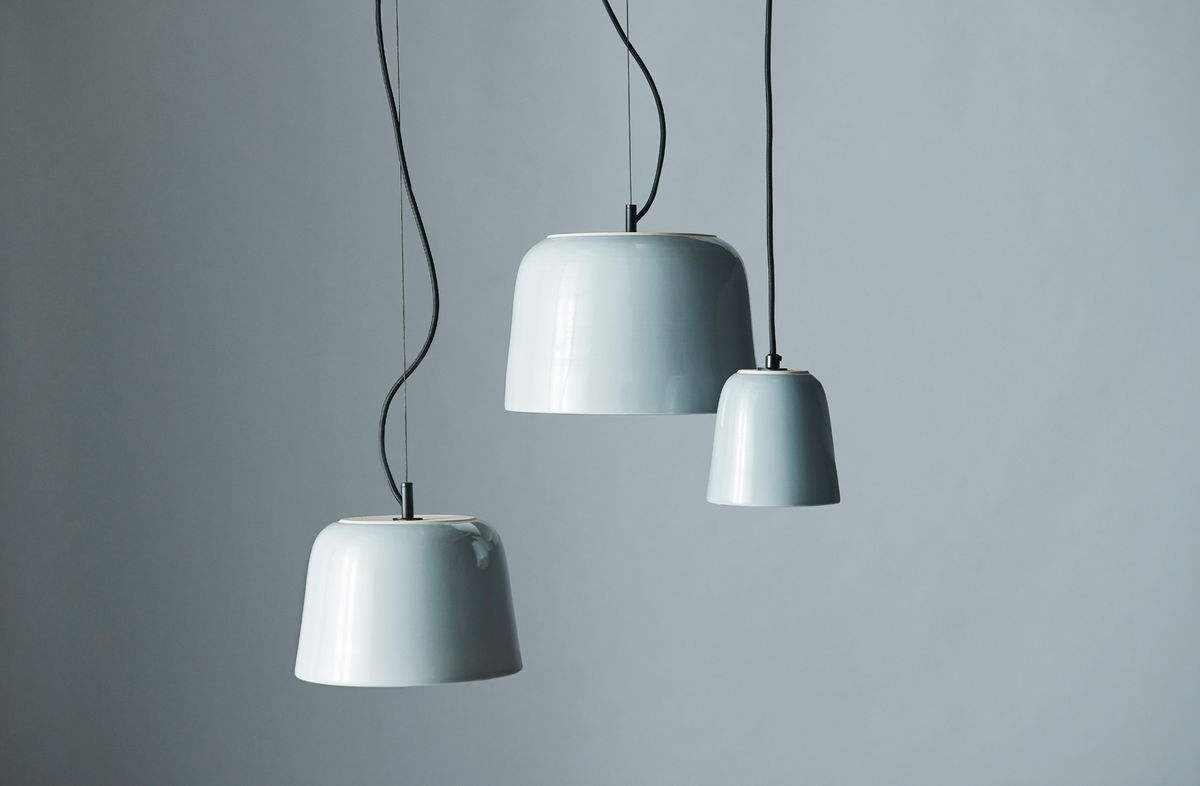Hungarian-American psychologist Mihaly Csikszentmihalyi has spent his life studying, amongst many other things, creativity and happiness, and how they are expressed as a vehicle and by-product of human motivatio n. The widely popularized notion of “flow,” as a highly focused, intensely immersive state of activity or creative work, was first articulated in his seminal 1990 book Flow: The Psychology of Optimal Experience.
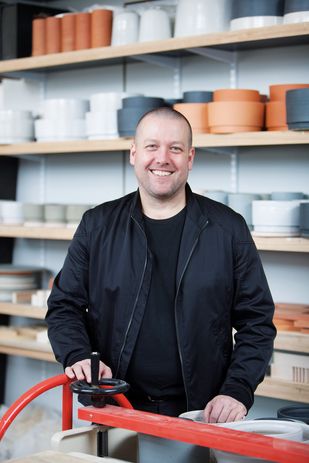
Bruce Rowe in his Northcote studio.
Image: Tatjana Plitt
What has this got to do with a small ceramics studio in Melbourne’s inner north, you might be asking? The answer is, a great deal, and all of it revolves around the personal vocation of Bruce Rowe, the founder of Anchor Ceramics.
A venture several years young, Anchor Ceramics is a producer of ceramic products generally organized into four streams: lighting, tiles, garden pots and vessels, and highly personal, evocatively archetypal art pieces. Rowe describes his venture as a “ceramics design studio” rather than a pottery. This is not by accident.
Rowe’s first love is the act of making. The aptly named Make Architecture, the studio founded by Mel Bright where Bruce practised for five years, has an exploratory approach to architecture. Not surprisingly, its finished projects are grounded in materiality and texture, and the play of light across surfaces. Inevitably, as Rowe points out, the more senior someone becomes in the architecture profession, the further removed from actual making they find themselves. Team management and administrative burdens move to the fore.
For a host of reasons, this was not enough for Rowe. His inherent love of making was already bleeding out at the edges of his day job, finding initial expression in his hand-painted watercolours. An acquaintance, who had seen his gridded and geometric watercolours that resembled walls of tiles, suggested to Rowe that he consider exploring ceramics as a medium.
The rest, as they say, is history. Rowe transformed himself, through hard work and dedication over several years, into that most uncommon (possibly even rare) species: the creative individual who has found his groove, his unique medium, and its most essential form of expression. In short, he has found his “flow.”
Anchor Ceramics’ planters are thrown by hand on a potter’s wheel and finished in glazes.
Image: Lisa Cohen
Consider the evidence. When Rowe first began taking night classes in ceramics, he says that it felt “more like remembering something, than learning something new.” He was, and remains, “intrinsically motivated ” to work with clay, another concept explored by Csikszentmihalyi, where the individual is compelled to work in a state of deep engagement without any regard for reward or result. Rowe calls this being “process driven, where the making is more important than the product.”
When speaking of the material itself, something lights up Rowe’s countenance. It is not a superficial enthusiasm. Rather, his quiet manner conveys a deep conviction that clay is something essential to his, and perhaps our, being. His view evokes clay’s historic and ancient role, as well as its contemporary expression.
Rowe speaks compellingly of an “undercurrent,” a deep channel of flow that animates his practice, and connects the different streams of his creative life like a ribbon or thread. Finding a life with his “hands in the dirt” has been, as Rowe describes, like “going through the next open door,” one after the other, after spending a lifetime “banging my head against locked doors.”
The shapes of Rowe’s pots, the uncannily familiar forms of the light fittings, the archetypal and de Chirico-like shapes of the architectural fragments in his Structures art pieces – all of these emerge from a clarity of vision that is all about the primordial clay. “The earth is the material the design studio interrogates,” he reminds me.
The starting point for Anchor Ceramics’ planter collection was the common terracotta pot.
Image: Lisa Cohen
Rowe is also running a successful product-based design business, with a solid distribution network and a satisfyingly large reservoir of unmet demand for what are, essentially, hand-made products of the highest quality. Anchor currently employs five people and is looking to expand into new premises. Perhaps not surprisingly, Rowe has also applied his panoramic creative curiosity to the business of, well, business. “It is interesting – now I know what a balance sheet is, and a profit-and-loss statement,” he says. He dares to suggest that these things, too, are essential subjects for creative consideration.
When the qualities of a medium have a significant connection to the “universe” – encompassing the entire universe in the proverbial grain of sand, or in this case, literally formed of the “ground beneath our feet” – then the worker in that medium is both transported and transformed. Transported, in that each moment they work in a deep, meditation-like state of focus, “cutting the earth” as Rowe tells it; and thus transformed, from a mere practitioner to an artist. Csikszentmihalyi links this transformative state directly to a life of bone-deep, genuine happiness and satisfaction.
Within this earth-bound framework, as Rowe says, the “possibilities are limitless; it is an amazing material.” Perhaps it is also an amazing, and inspiring, way to spend one’s working life.
Source
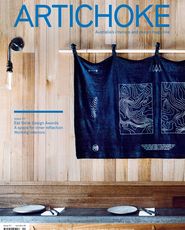
People
Published online: 31 Jan 2017
Words:
Marcus Baumgart
Images:
Haydn Cattach,
Lisa Coehn,
Lisa Cohen
Issue
Artichoke, December 2016

